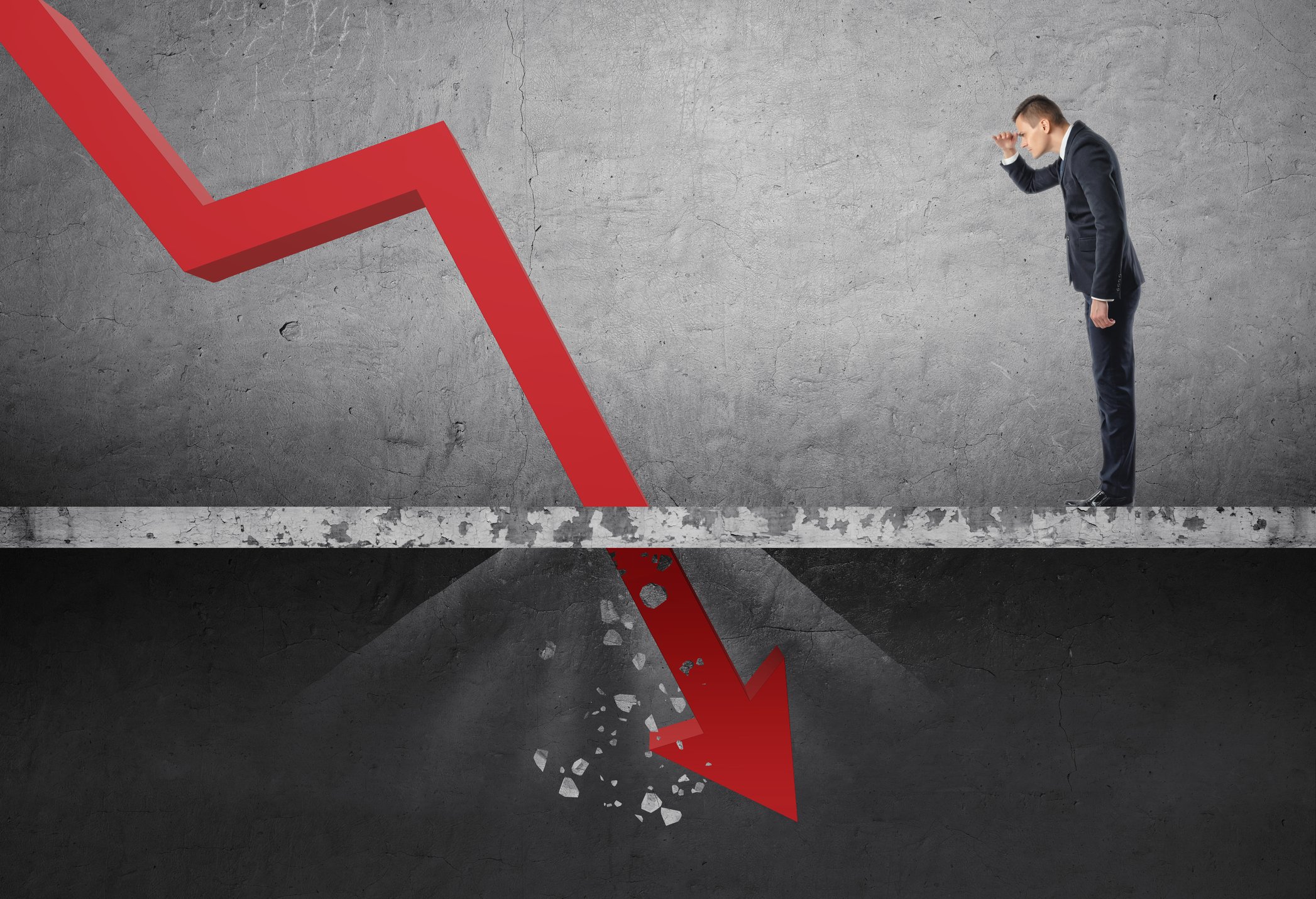Mall real estate investment trust (REIT) CBL & Associates Properties (CBL +0.00%) has been struggling for years, as consumer foot traffic has rapidly shifted away from the low- and mid-tier malls that make up the bulk of its real estate portfolio. The 2018 bankruptcies of Bon-Ton and Sears Holdings and a costly class action settlement added to its woes.
Last year, CBL tried to fend off disaster by selling assets and suspending its dividend in order to pay down debt. As a result, it ended 2019 with $4.25 billion of debt (including its share of joint-venture debt), down from $4.66 billion a year earlier.
However, those efforts were too little, too late. The COVID-19 pandemic has crushed CBL's business, making it virtually certain that shareholders will be wiped out one way or another.
A bad situation is getting a whole lot worse
CBL's same-center net operating income (NOI) fell 6.5% year over year in 2019, with the declines accelerating toward the end of the year. In the first quarter of 2020, same-center NOI fell 8.7%. Thus, even before the full force of the pandemic hit the U.S., CBL's NOI was eroding rapidly, denting the REIT's cash flow.
With malls around the country forced to close for months due to COVID-19, the short-term and long-term pressure on CBL has accelerated. In the short term, many tenants have withheld rent to conserve cash. As of early June, CBL had collected just 27% of billed cash rent for April and expected a similar collection rate for May. Some of that rent will be repaid later this year or in 2021, but some may never be collectible.

Image source: CBL & Associates Properties.
Additionally, the pandemic is driving numerous weaker retailers into bankruptcy. Two of CBL's top 25 tenants (in terms of annual rent) have already filed for bankruptcy since May: J.C. Penney and GNC. Both plan to close numerous stores and use the leverage offered by the bankruptcy process to bargain for lower rents at those that remain. No. 7 tenant Ascena Retail is also on the verge of filing for bankruptcy and could close more than 1,200 stores.
Even among retailers that face little near-term bankruptcy risk, many key tenants are looking to shrink and focus on their best stores. For the most part, those aren't located in CBL malls. In some cases, such tenants may be able to exit leases ahead of schedule due to co-tenancy clauses that have kicked in at malls with multiple anchor vacancies.
CBL has already been struggling with falling rents and sagging occupancy at its malls. The COVID-19 pandemic is likely to accelerate the tenant exodus, causing many weaker malls to fall into death spirals.
CBL skips interest payments
Investors got a clear sign of the extent of CBL's difficulties last month, when the mall REIT skipped an $11.8 million interest payment due on June 1 and an $18.6 million interest payment due on June 15. In both cases, CBL took advantage of 30-day grace periods available to it, buying time to negotiate with lenders about debt restructuring options.
At the end of June, rather than making the requisite interest payment before the grace period ran out, CBL negotiated a forbearance agreement running through July 15. When July 15 came around, the company extended the forbearance agreement for another week. Essentially, CBL is just kicking the can down the road bit by bit, but such tactics are obviously unsustainable.
Restructuring is inevitable
Considering the damage caused by the COVID-19 pandemic, it's doubtful that CBL's malls are worth as much as the REIT's debt load. Whereas higher-quality mall REITs can play for time and make good on their debts once tenants repay rent that was deferred this spring, many of CBL's malls may never recover from this setback. Industry analysts expect at least a quarter of the malls in the U.S. to close entirely within the next five years. And in late April, Green Street Advisors predicted that more than half of the remaining department stores in U.S. malls could close by the end of 2021.
For now, CBL has avoided bankruptcy, partly because there's no market for most of its real estate. If creditors forced it into bankruptcy, it would still be in their interest to let CBL continue operating as it has been -- hoping that the value of its properties might recover somewhat over time -- rather than attempting to liquidate its assets quickly.
Nevertheless, CBL will need to restructure its debt -- either through bankruptcy or out-of-court negotiations -- sooner or later. Holders of its nearly $1.4 billion of unsecured debt will almost certainly need to take a significant haircut. And if that happens, they will likely demand the vast majority of the company's equity as compensation, more or less wiping out common and preferred shareholders.






